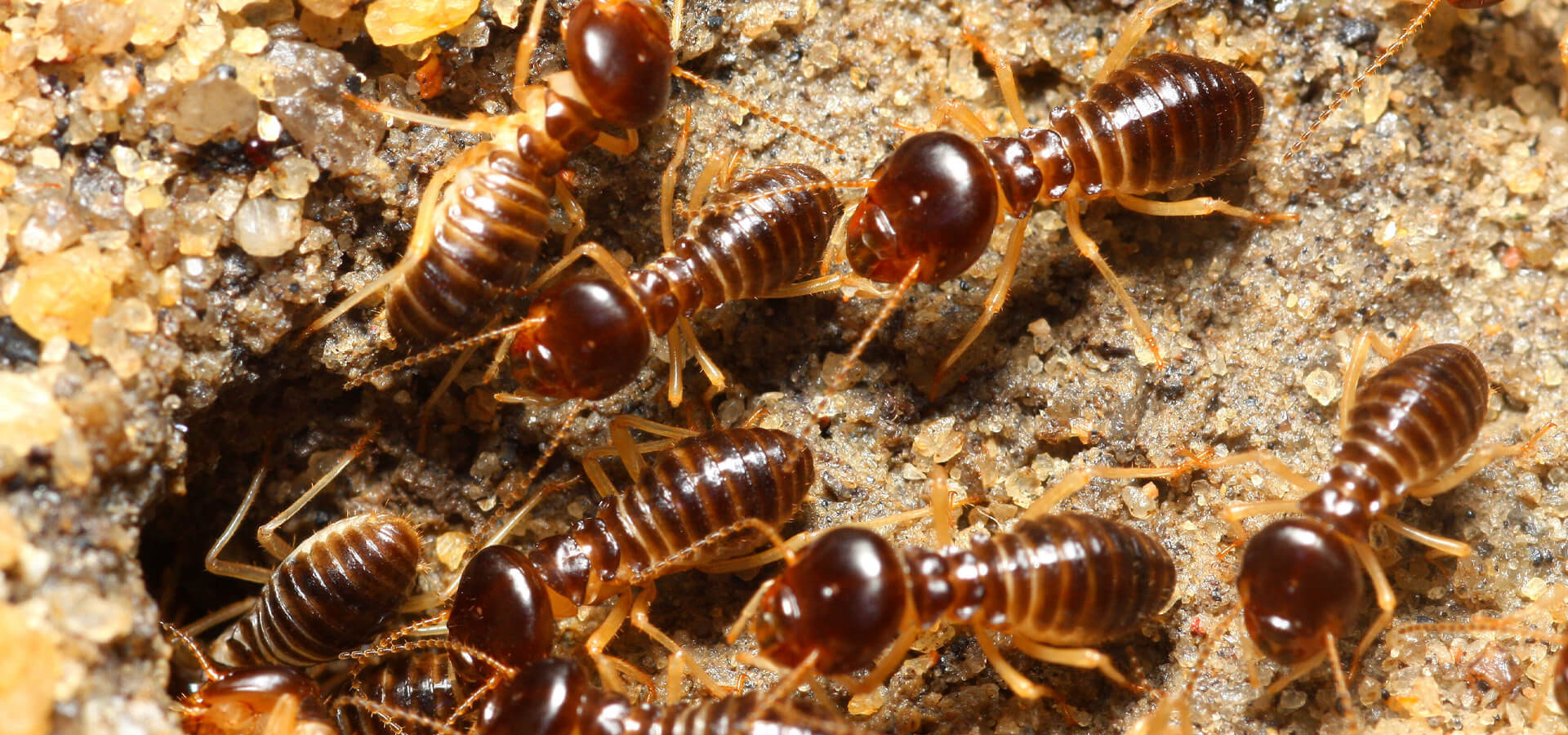Subterranean termites dwell below the ground where the moist soil provides the insects with a never ending source of water. Drywood termites do not need as much water as their subterranean counterparts in order to thrive, as drywood termites adapted to feed on wood sources located above ground where water cannot be always be readily accessed. Subterranean termites inflict damage to structural wood at a faster rate than drywood termites, and this is due to the much greater size of subterranean termite colonies, as well as the relatively rapid maturation rate of subterranean termite colonies. For example, drywood termite colonies usually contain hundreds or a few thousand termites, while mature subterranean termite colonies contain over one million individual termites. Although subterranean termites are generally more destructive than drywood termites, the former consumes less wood than the ladder within infested structural wood sources.
Subterranean termite workers consume only soft spring growth within moist structural lumber, while drywood termites consume and burrow into hard portions of dry structural lumber, eventually causing lumber infested with drywood termites to become completely hollowed out. Also, while subterranean termites travel back and forth between indoor structural lumber and outdoor ground soil in order to hydrate and tend to other colony members, drywood termite colonies are contained entirely within single wood items where they nest and feed during their entire life span. This is why drywood termites excavate larger nesting cavities and more tunnels within infested wood than subterranean termites.
Subterranean termites use soil, excrement and chewed plant matter to construct “mud tubes,” which allow the pests to access above ground wood sources while also avoiding dry outside air. Mud tubes are pencil thin access tunnels that directly connect the ground soil to indoor structural wood. Mud tubes on a home’s foundation indicates that a subterranean termite infestation has taken place. When it comes to drywood termites, only swarming alates initiate infestations, which can occur anywhere on or within a home. Unsurprisingly, subterranean termites generally damage subflooring, joists, mudsills and other structural wood sources located near the ground surface, while drywood termites frequently infest attic spaces, wood beneath shingles, and upper story structural wood sources. Since the most important structural wood components are located at the base of a home, subterranean termite damage is usually more costly than damage inflicted by drywood termites.
Have you ever found mud tubes within or on your home?


